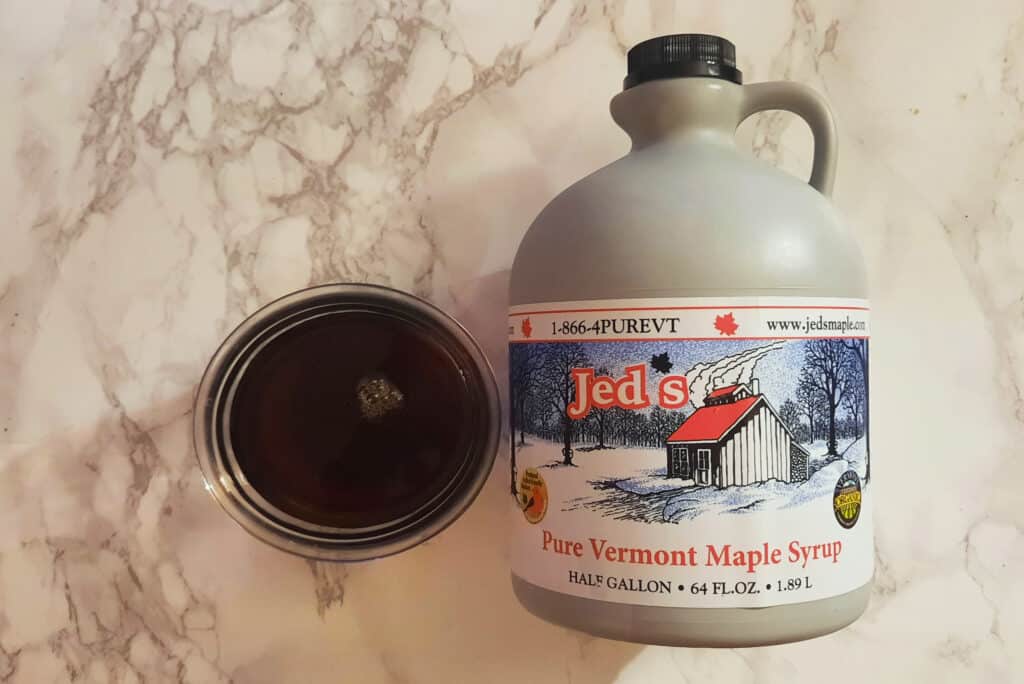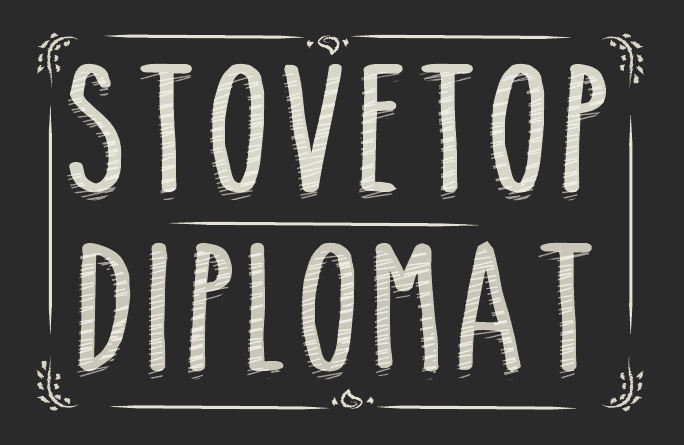Maple Syrup and Pancake Syrup:
In the course of human events in the United States, grocery shelves began filling up with a variety of maple-flavored, pancake, waffle, table and other syrups whose names imply “maple syrup” but don’t actually say the phrase directly. This is because “maple syrup” is a legally protected term for sap that has been boiled down from maple trees, with no additional additives. All of these other condiments are amalgamations of high fructose corn syrup (usually) and other synthetic flavors. The term “maple-flavored” does mean that the syrup must contain at least a little real maple syrup, but you will almost always find that the first ingredient is still corn syrup.
If you’ve been living a life of plastic bottles of this brown glop, I urge- nay, insist- that you try the real stuff. It is unfathomable how much better it is. It is also much more appropriate for cooking. If you see the phrase maple syrup on this site, know that it is ALWAYS real maple syrup and I absolutely cannot guarantee that your recipes will come out the same if you use the high fructose corn syrup products. In fact, I would be willing to bet that they will turn out much worse. I haven’t tried fake maple syrup in years- honestly, it kind of freaks me out.
Real maple syrup will have grades on the label that will indicate the taste. These range from super light in flavor to very heavy in flavor. All of the choices are great and will work in any recipe. What you choose will just depend on personal preference and of course, what’s available.

Grade A vs. Grade B Maple Syrup:
The maple syrup grading system has changed recently, which can make it confusing to get back up to speed. Back in the day, there were essentially two grades available at the retail level- Grade A (with some variations therein) and Grade B. Grade A was lighter in both color and taste, while Grade B was darker with a more robust maple flavor. Many people (myself included) preferred Grade B’s rich flavor, even though this sounds like it would be of inferior quality. However, the name “Grade B” has been done away with, although this type of syrup still exists. Under the new labeling system, pretty much everything is labeled as Grade A + a descriptive phrase. Which leads us to…
The New Maple Syrup Grading System:
Presently, there are five grades of maple syrup, although in my experience you will really only see three of them sold by most retailers. These are:
- Grade A Golden/Delicate Taste
- Grade A Amber/Rich Taste
- Grade A Dark/Robust Taste
(The other two are Grade A Very Dark/Strong Taste, a commercial grade, and Processing Grade. You probably won’t run into these in your day-to-day life.)
The first one, Golden/Delicate Taste is going to be the closest to what was once Grade A Light Amber. Light in color and maple flavor, this will be your best move if you only want a hint of maple flavor. Of the three, this is the one I see the least in Colorado. Not that we have an abundance to choose from in the first place.
The second one, Amber/ Rich Taste is going to have a middle-of-the-line, standard maple richness. This is the new name for what was formerly Grade A Dark Amber. Around here, this is the most common variety. If your store has a generic brand of maple syrup, it is probably this.
The third one, Dark/Robust Taste is what was formerly Grade B. Since the reclassification, this has become much easier to find than Grade B once was. It is my personal favorite as the taste is extremely rich and deep. What’s better than maple flavor? More maple flavor. So if you were concerned and sad that you couldn’t find Grade B maple syrup, be not afraid!
That said, you can’t go wrong with any of these choices, and all will work the same in any recipe.
Where can I find real maple syrup?
Fortunately, as time has progressed, the options are becoming more abundant. Almost every store, at least in Colorado, carries a few brands. Sprouts and Safeway have it under their store label, and Kroger (ahem, King Soopers or City Market) has it under their Private Selection label. Costco definitely sells it as well. Often it is packaged in glass and living on a shelf above the sketchy pancake syrup goop.
However, I usually import mine from Vermont. There are about a million retailers, usually small family operations, that sell maple syrup from Vermont and other states in the Northeast. The advantage is that first of all, it’s cheaper (syrup around here is definitely expensive!), and you can get it in very large jugs. Plus, it’s always a net positive for society to support small business. Check the internet- you will find plenty of options.
The Stovetop Diplomat
Close Cookmode
